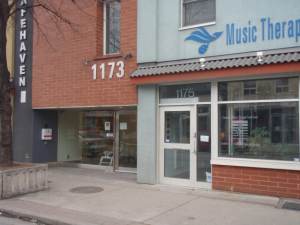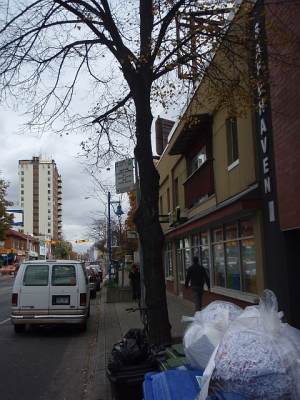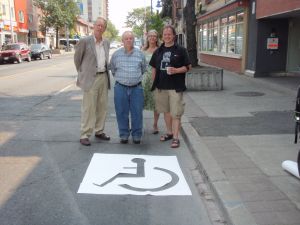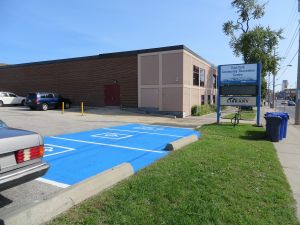Controls: show
 Topic
Topic
 Comments:
Comments:
[log in] or [register] to leave a comment for this topic.
Go to:  all topics
all topics
Go to:  treetops
treetops
Options: show
Looking inside:
 Accessibility and Disability
Accessibility and Disability
( display item 5)
display item 5)
Contact:
Website:
[home] [about] [help] [policies] [legal disclaimer]
Subsites:
 documents
documents topics
(or
topics
(or  site menu)
site menu)
 blogs
(or
blogs
(or  posts)
posts) library resources
(including
library resources
(including  pictures)
pictures) database (all)
database (all)
Members:
 Accessibility and Disability
Accessibility and Disability
 return to container details page
return to container details page

 previous display previous display |
next display

|
 Cover page
Cover page Topic details
Topic details
 Disabled parking/loading signage: The problem
Disabled parking/loading signage: The problem
Setup: 19-Sep-2014 [9597]
Part of
 Accessibility and Disability
Accessibility and Disability
 Municipal Fines
Municipal Fines
 Pedestrian and Street Commons
Pedestrian and Street Commons
 Using the Commons
Using the Commons
The story of the signage problem at a disabled loading area on Bloor Street West, 2010 -2014
September 2014


The answer came back: Between April 2008 and December 2010, 345 people, parking in the restricted spot, were issued tickets totalling $124,650 at 1173 Bloor Street and $30,600 at 1175 Bloor Street. So the total fines at that one disabled loading zone over three years would have added up to $155,250.
This might be regarded as a clear indicator that better signage was needed, but Transportation Services said no additional signage would be added. The Ward 18 City Councillor, Ana Bailao, argued for the signage but her staff did not get anywhere.

After many letters back and forth, CELOS go its own warning stickers made up at a local print shop (showing the wheelchair symbol)for the nearby pay-and-display machine. Then David Cayley tried to follow up by checking with the city whether the number of parking tickets had gone down because of the stickers. The city said there would be a $60 fee for finding out that information. David Cayley wrote to Corporate Access saying that this information was in the public interest and the group should not be charged for it. But Corporate Access said the fee would stand.
On May 23, 2012, David went to court for his original parking ticket. Although the judge said that none of the arguments about insufficient signage were relevant, he reduced all “disabled parking” or “disabled loading zone” fees in his courtroom from $450 to $125.
David Cayley made an unsuccessful request to get the Information and Privacy Commissioner to overturn the $60 fee for finding out whether the wheelchair stickers on the pay-and-display machine were helping. Two neighbourhood groups including the Business Improvement Association wrote letters in support of pavement markings, as did the director of the Music Therapy Trust (which needs the loading zone for its clients) and Pete Lilly, the owner of the bike store.
On April 2 2013, CELOS wrote to the ombudsman, Fiona Crean, on behalf of the neighbourhood, asking for her help. The neighbourhood letters were submitted as part of the request. The ombudsman staff reported what we already knew – that Transportation Services did not intend to add pavement signage.
Despite this, two ombudsman staff came out to a site meeting on August 21, 2013. This meeting was followed by two more letters from Pete Lilly, about two customers who had also been ticketed for unknowingly parking in the spot. It’s not clear whether the two new letters became part of the ombudsman’s file, but in one telephone conversation , the ombudsman’s staff said that there have been very few complaints by Torontonians about insufficient parking-restriction signage.In October 2013, that part of Bloor Street was reconstructed, resulting in the removal of all street trees.
On June 14, 2014, two white lines were painted on the road to denote the margins of the disabled loading zone.
On August 12, 2014, an article in the National Post reported that between 2008 and 2014, a fire hydrant set back 20 feet from the street, at 393 University Avenue, had become a cash cow for the city, generating $289,620 in parking tickets. "No markings on the street make it obvious that the spot is off-limits....the city has collected more than $24 million since 2008 for fining people who parked too close to hydrants." The article also mentioned another hydrant at 33 Elmhurst Ave. which "lurks in the shadow of a large condo building..." It made $207,030 in parking tickets since 2008. The reporter discovered that the city makes about $80 million a year from parking fines.
In early September, a new street tree was planted 8 feet from the restricted parking sign on Bloor Street.
On September 10, 2014, a letter arrived from the ombudsman’s office saying that since the original tree had been removed and yellow warning lines had been painted on the road, the ombudsman is closing the case. Although no yellow lines were actually painted, the ombudsman staff said they were satisfied with the white lines. The main concern of Transportation Services, according to the ombudman's letter, is that painting a wheelchair symbol on the pavement "would lead to requests at other locations and create a resource issue." Nevertheless, it appears that in low-revenue locations like city community centres and City Hall parking, the resources to mark the pavement are there.CELOS intends to continue to collect complaints and exceptions as time goes on, until this problem is fixed.
 Disabled parking/loading signage: The problem
Disabled parking/loading signage: The problem
Setup: 19-Sep-2014 [9597]
 ·1·
Album: Disabled parking signage
·1·
Album: Disabled parking signage
Part of:
 Disabled parking/loading signage: The problem
Disabled parking/loading signage: The problem

 Picture Albums
Picture Albums
Date: 02-Sep-2012 [5743]
 ·2·
Disabled Loading Road Work Readiness
tree cut down in front of Safehaven
·2·
Disabled Loading Road Work Readiness
tree cut down in front of Safehaven
Part of:
 Disabled parking/loading signage: The problem
Disabled parking/loading signage: The problem
Date: 19-Nov-2013
 direct link (DisabledLoadingRoadWorkReadinessOct15_13A.jpg)
[9435]
direct link (DisabledLoadingRoadWorkReadinessOct15_13A.jpg)
[9435]
 ·3·
Disabled Loading Road Work Readiness (2)
pylons ready
·3·
Disabled Loading Road Work Readiness (2)
pylons ready
Part of:
 Disabled parking/loading signage: The problem
Disabled parking/loading signage: The problem
Date: 19-Nov-2013
 direct link (DisabledLoadingRoadWorkReadinessOct15_13C.jpg)
[9436]
direct link (DisabledLoadingRoadWorkReadinessOct15_13C.jpg)
[9436]
![]() ·4·
T.O. handicapped parking cash grab
Toronto Sun article,Feb 18, 2012
·4·
T.O. handicapped parking cash grab
Toronto Sun article,Feb 18, 2012
Part of:
 Disabled parking/loading signage: The problem
Disabled parking/loading signage: The problem
Date: 20-Feb-2012
 direct link
[1036]
direct link
[1036]
Guide: Correspondances
 ·5·
Summary of correspondances
Disabled parking/loading signage
·5·
Summary of correspondances
Disabled parking/loading signage
Part of:
 Disabled parking/loading signage: The problem
Disabled parking/loading signage: The problem
Date: 22-Sep-2014 [9600]
 ·6·
Insufficiently marked disabled parking - correspondence (1)
·6·
Insufficiently marked disabled parking - correspondence (1)
Part of:
 Disabled parking/loading signage: The problem
Disabled parking/loading signage: The problem
Date: 20-Jan-2012 [965]
 ·7·
Insufficiently marked disabled parking - correspondence (2)
·7·
Insufficiently marked disabled parking - correspondence (2)
Part of:
 Disabled parking/loading signage: The problem
Disabled parking/loading signage: The problem
Date: 05-Mar-2013 [8672]
 ·8·
Insufficiently marked disabled parking - correspondence (3)
·8·
Insufficiently marked disabled parking - correspondence (3)
Part of:
 Disabled parking/loading signage: The problem
Disabled parking/loading signage: The problem
Date: 05-Mar-2013 [8673]
 ·9·
Insufficiently marked disabled parking - correspondence (4)
·9·
Insufficiently marked disabled parking - correspondence (4)
Part of:
 Disabled parking/loading signage: The problem
Disabled parking/loading signage: The problem
Date: 12-Oct-2013 [9423]
 previous display previous display |
next display

|
 home
home

 start browsing this sub-Topic
start browsing this sub-Topic




